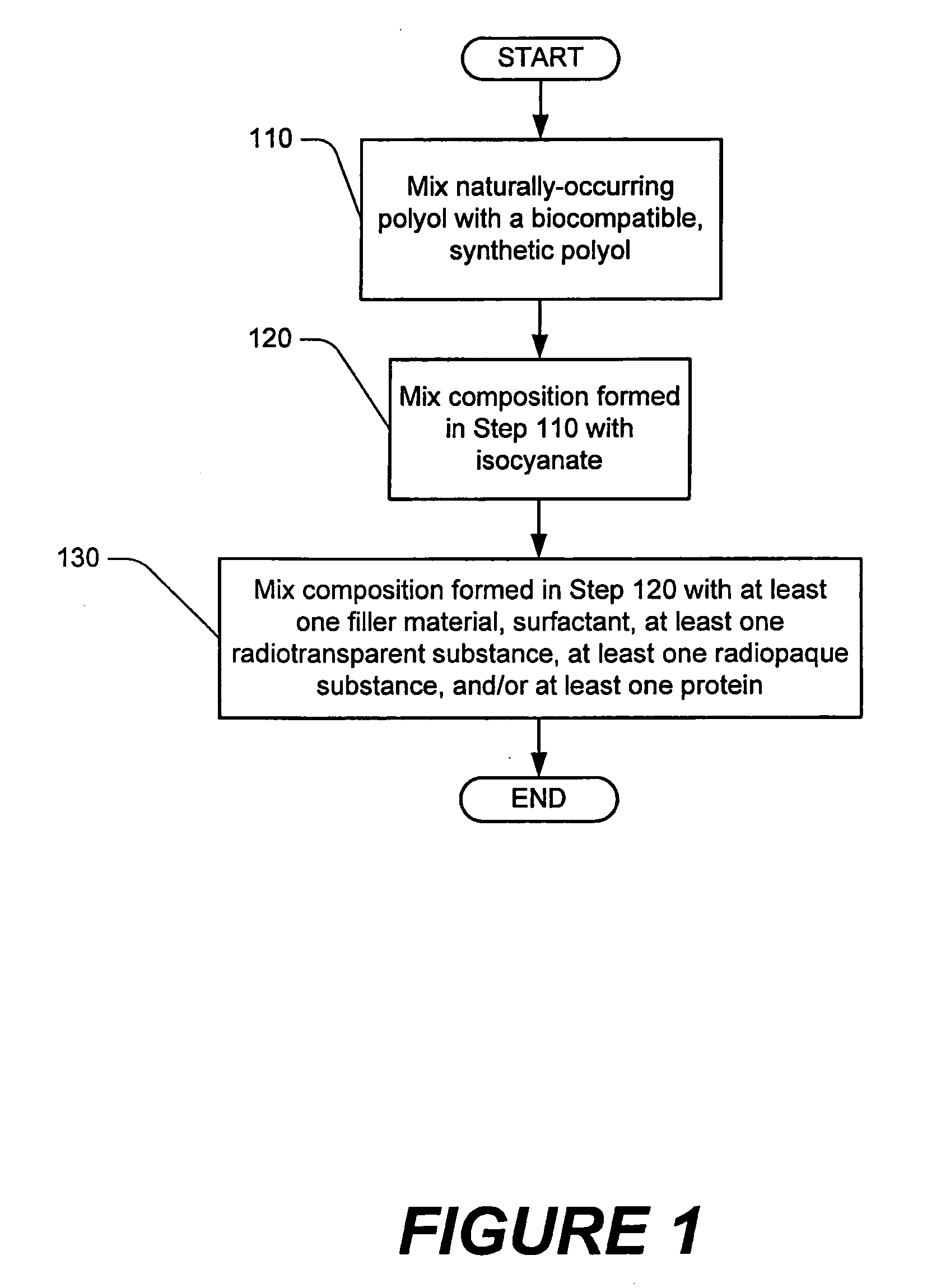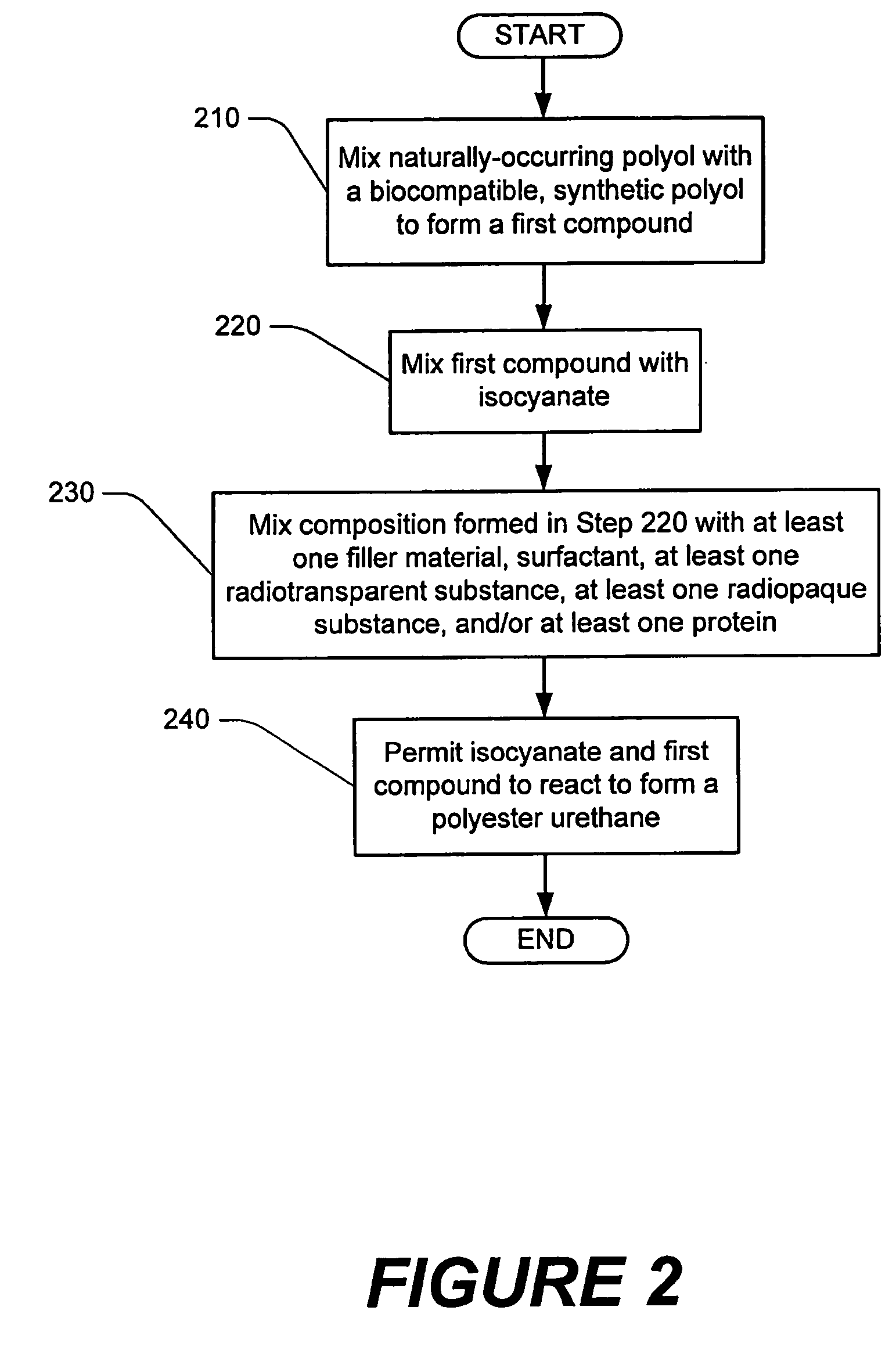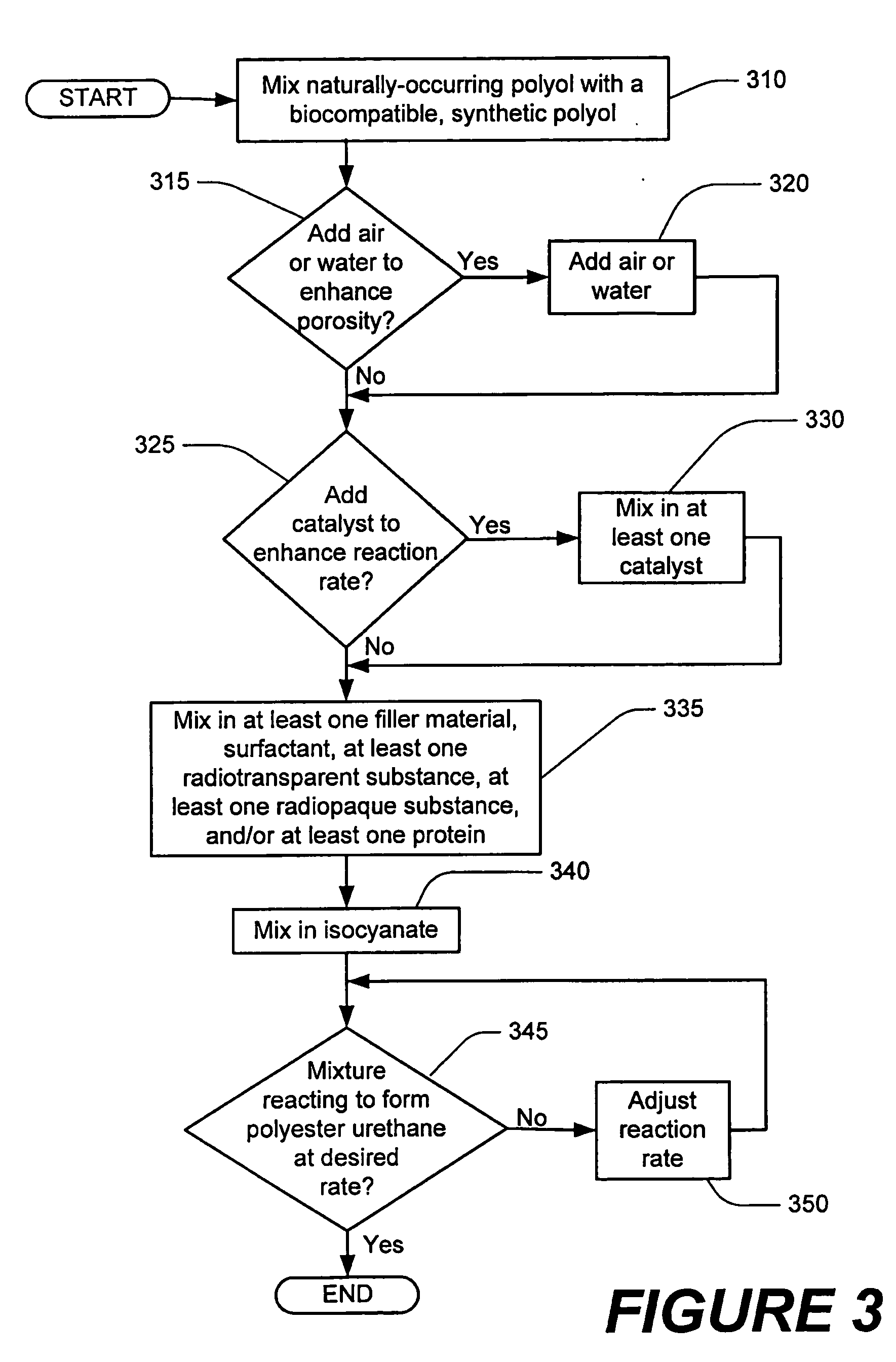Methods of performing medical procedures which promote bone growth, compositions which promote bone growth, and methods of making such compositions
- Summary
- Abstract
- Description
- Claims
- Application Information
AI Technical Summary
Benefits of technology
Problems solved by technology
Method used
Image
Examples
example 1
[0120] A sample composition of the present invention was prepared by mixing RUBINATE 9433 with CASPOL® 5001 in a 4:1 equivalent ratio to form an isocyanate prepolymer. Calcium carbonate then was added to the isocyanate prepolymer in an amount of 72.4% by weight of the isocyanate prepolymer, and mixed for one minute to form a paste. CASPO® 1962 (containing DABCO 33LV in the amount of 0.20% by weight of the CASPOL® 1962) then was added to the isocyanate prepolymer and calcium carbonate mixture in the amount of 68.65% by weight of the isocyanate prepolymer, and mixed for 2 minutes in a plastic beaker with a spatula. To prepare test samples for hardness testing, a portion of the above mixture was poured into a cylindrical cavity (dimensions 1 in2 by ½ inch) in a Teflon-coated mold, and visually observed for evidence of gelation. Once gelation was detected, the mold was covered with a Teflon-coated plate and placed into a Carver press under slight pressure. Hardness testing was performed...
example 2
[0124] Sample Composition No. 2, a sample composition of the present invention, was prepared by mixing ISONATE 50 OP with CASPOL® 5001 in a 4:1 equivalent ratio to form an isocyanate prepolymer. Calcium carbonate then was added to the isocyanate prepolymer in an amount of 72.4% by weight of the isocyanate prepolymer, and mixed for one minute to form a paste. CASPOL® 1962 (containing DABCO 33LV in the amount of 0.35% by weight of the CASPOL® 1962) then was added to the isocyanate prepolymer in the amount of 68.5% by weight of the isocyanate prepolymer, and mixed for 2 minutes in a plastic beaker with a spatula.
[0125] To prepare test samples for hardness testing, a portion of the above mixture was poured into a cylindrical cavity (dimensions 1 in2 by {fraction (1 / 2)} inch) in a Teflon-coated mold, and visually observed for evidence of gelation. Once gelation was detected, the mold was covered with a Teflon-coated plate and placed into a Carver press under slight pressure. Hardness te...
PUM
| Property | Measurement | Unit |
|---|---|---|
| Temperature | aaaaa | aaaaa |
| Length | aaaaa | aaaaa |
| Length | aaaaa | aaaaa |
Abstract
Description
Claims
Application Information
 Login to View More
Login to View More - R&D
- Intellectual Property
- Life Sciences
- Materials
- Tech Scout
- Unparalleled Data Quality
- Higher Quality Content
- 60% Fewer Hallucinations
Browse by: Latest US Patents, China's latest patents, Technical Efficacy Thesaurus, Application Domain, Technology Topic, Popular Technical Reports.
© 2025 PatSnap. All rights reserved.Legal|Privacy policy|Modern Slavery Act Transparency Statement|Sitemap|About US| Contact US: help@patsnap.com



